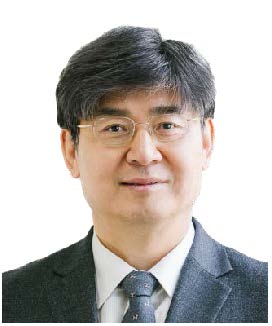
Bio: Sangseom Jeong is a professor of Yonsei University, an immediately past president of Korean Geotechnical Society (KGS), a vice chair of TC212 (Deep foundations) in ISSMGE (International Society of Soil Mechanics and Geotechnical Engineering), a chair of Asian TC-18 (Mega Foundations), a president of GIT4CC center. He holds MS from UC Davis and PhD from Texas A&M. The main field of expertise is mega foundation of long span bridges and high-rise buildings, LRFD, pile foundation, deep excavation, landslides, debris-flow and slope stability. He is a passionate researcher of pile, drilled shafts deep foundation, landslide assessment and innovative engineer with proven leadership in management of a wide variety of national and international projects. He has authored and served as a reviewer for many geotechnical journals. He has co-edited 15 national geotechnical engineering text books and authored about 88 SCI articles in major reputable international journals, 143 national journals, 83 international conference papers, 80 technical consulting reports and 50 patents in deep and shallow foundations, excavation and landslides and debris flow.
Topic 1: Unified prediction method for the rainfall-Induced landslides and debris flows
In this study, a unified method was proposed for the analysis of rainfall-induced landslides by using GIS based landslides prediction model (YS-Slope model) and a prediction method by using a large deformation analysis method. A susceptibility assessment of landslides and debris flows in Umyeonsan (Mt.), South Korea were conducted as a case study by using the landslides prediction model and ABAQUS/CEL large deformation method. It is shown that the result of the analysis has a good agreement with historical landslides and debris flows. Based on the case study for Umyeonsan (Mt.) landslides, failure behaviors of landslides and debris flows are well predicted by the method described in this study. This procedure can be applied to the prediction of landslides and debris flows of another study area.
Topic 2: Mega Foundations for High-rise Buildings and Bridges
Abstract: In recent days, the foundations of huge structures in general and mega foundations of grand bridges and high-rise buildings in particular are required in geotechnical engineering. This study describes the analysis and design of raft and piled raft foundation for rock-socketed drilled shafts. An improved analytical method (YSPR:YonSei Piled raft) considering raft flexibility and soil nonlinearity was developed for analysis of behavior of piled raft foundations. A 3-D analytical method of the soil–structure interaction is incorporated by taking into account the soil spring coupling effects based on the Filonenko-Borodich model. A series of parametric analysis is performed for soil-structure-foundation interactions. As a result, the behavior of mega foundations is estimated and highlighted.